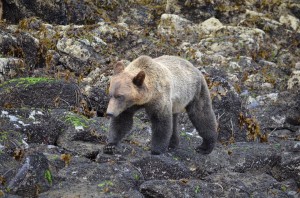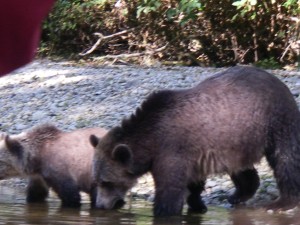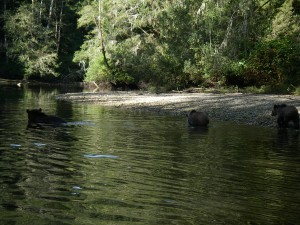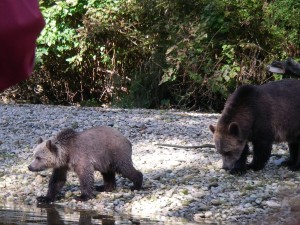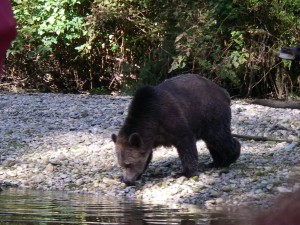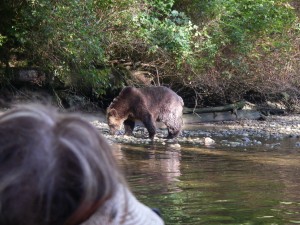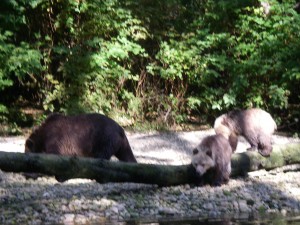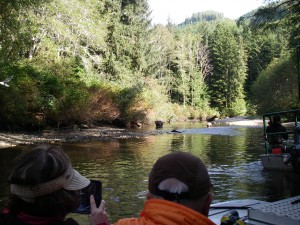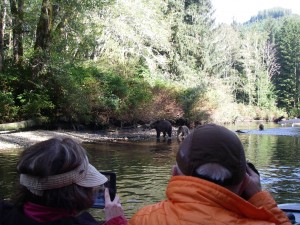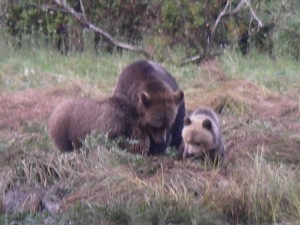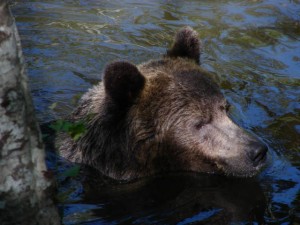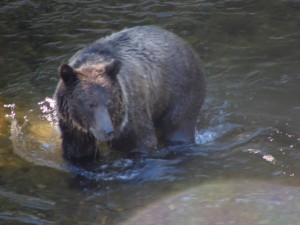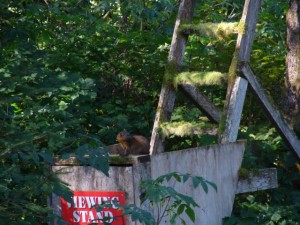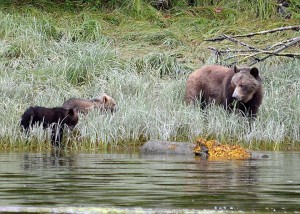
Spring and early summer (until August 24th) tours from Grizzly Bear Lodge involve a boat ride up Knight Inlet to the estuary of the Glendale River. This photo of the grizzly bear with two spring or first year cubs was taken in this estuary. The mothers bring their cubs to the shores along Knight Inlet in late May. The cubs born in January or February are only three or four months old and when they first appear along the shore stay close to their mothers. As time progress they move into the estuary to feed on the protein rich sedge grass. These cubs are closer to five months old but still stay close to their main source of food as they will nurse for a few more months and there will be a few male grizzlies in the area because mating season last until mid-June.
